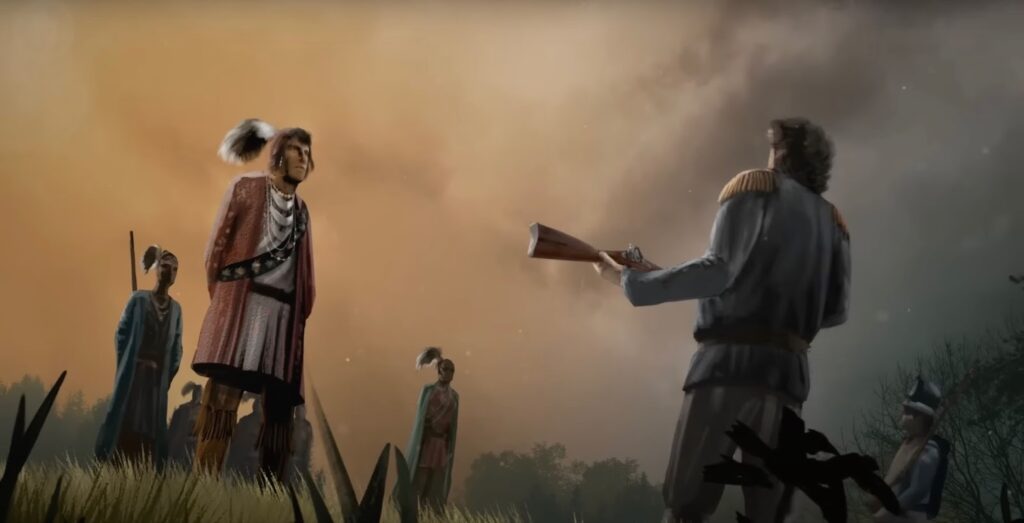The history of the Seminole Wars in Florida is a complex and often overlooked aspect of American history. These conflicts, which spanned over four decades, were a result of the ongoing struggle between white settlers and Native American tribes for control of the southern frontier. The Seminole Wars not only had a significant impact on the development of Florida as a territory and later a state, but also played a crucial role in shaping the relationship between the United States government and Native American nations.
Florida of the Seminoles
The Seminole people are a Native American tribe that originated from various Creek groups who migrated to Florida in the 1700s. The name “Seminole” is derived from the Spanish word “cimarrón,” meaning runaway or wild. These early Seminoles were not a unified tribe, but rather a diverse group of Native Americans who sought refuge in the swamps and forests of Florida to escape the encroachment of white settlers.
The origin of the Seminole conflict can be traced back to Governor Moore’s invasion into Spanish Florida in 1704. During this time, he introduced bands of Creeks into the region to destroy the Spanish Apalachee. Many of these Creek Indians remained in Florida and later joined forces with the British to fight against Georgia settlers during the American Revolution. As the Southern states continued to expand, the boundaries of all Native American groups in the region were disrupted, leading to tensions and conflicts.
In the mid-1700s, a group of Creeks, predominantly from the Hitchiti-speaking Oconee tribe, left Western Georgia and moved southward to the Gainesville prairies. These Seminoles were known for their adaptability to European ways, such as wheat farming and cattle raising. However, this also caused resentment among Georgia farmers who accused them of stealing their cattle. This tension would eventually lead to the first Seminole War.
The Treaty of Moultrie Creek
In 1823, the United States government signed the Treaty of Moultrie Creek with a group of Seminole leaders, known as the “Treaty Party.” This treaty aimed to establish a reservation for the Seminoles in central Florida and to relocate them from their traditional lands. In return, the Seminoles were promised protection from white settlers and annual payments of goods and money.
However, not all Seminoles agreed to this treaty, and many refused to leave their ancestral lands. This led to tensions between the “Treaty Party” and the “Non-Treaty Party,” which would eventually erupt into the Second Seminole War.

The Second Seminole War
The Second Seminole War, also known as the Florida War, lasted from 1835 to 1842 and was the longest and costliest conflict between Native Americans and the United States government. It was sparked by the refusal of the Seminoles to comply with the terms of the Treaty of Moultrie Creek and the increasing pressure from white settlers to remove them from their lands.
The Dade Massacre
One of the most significant events of the Second Seminole War was the Dade Massacre, which occurred on December 28, 1835. A group of soldiers, led by Major Francis Dade, was ambushed by a large force of Seminole warriors while traveling from Fort Brooke (present-day Tampa) to Fort King (present-day Ocala). Only three soldiers survived the attack, and this event marked the beginning of a brutal and bloody war.
The Second Seminole War was characterized by guerrilla tactics used by the Seminoles, who were familiar with the terrain and had the support of other Native American tribes. The United States government responded by sending in more troops and increasing their efforts to remove the Seminoles from Florida.
Seminole War in the Swamps
The Seminoles were able to hold off the U.S. Army for several years, thanks to their knowledge of the swamps and forests of Florida. They used these areas as a refuge and launched surprise attacks on the soldiers, making it difficult for them to gain any significant ground. The war also saw the involvement of notable figures such as Osceola, a prominent Seminole leader, and Abraham Lincoln, who served as a captain in the Illinois militia during the conflict.
Despite the Seminoles’ resilience, the United States government eventually gained the upper hand. In 1842, most of the remaining Seminoles were forced to leave Florida and relocate to Indian Territory (present-day Oklahoma). However, some Seminoles managed to evade capture and remained in Florida, leading to the Third Seminole War.
The Third Seminole War
The Third Seminole War, also known as the Billy Bowlegs War, took place from 1855 to 1858. It was a result of the Seminoles’ continued resistance to removal and the encroachment of white settlers on their lands. This conflict was much smaller in scale compared to the previous wars, but it still had a significant impact on the remaining Seminole population.
The Third Seminole War ended with the signing of the Treaty of Fort Myers in 1858, which allowed the Seminoles to remain in Florida on a reservation in the Everglades. However, this treaty was not fully enforced, and many Seminoles continued to live in the swamps and forests, avoiding contact with the U.S. government.

Florida Land Boom
Amidst the turmoil of the Seminole Wars, Florida experienced an economic and demographic transformation during the early 20th century, known as the Florida Land Boom. This unprecedented surge in real estate development attracted hordes of settlers and investors to the Sunshine State. The allure of Florida’s pristine beaches, lush landscapes, and promising prospects created a palpable frenzy, with individuals flocking to purchase land and capitalize on the burgeoning opportunities.
Ambitions and Legacies
Ambitions of the Seminoles:
- To preserve their ancestral lands;
- To resist displacement and encroachment;
- To maintain their cultural identity.
Legacies of the Seminole Wars:
- Forced expulsion from Florida;
- Enduring cultural resilience;
- The Seminole Tribe of Florida, a federally recognized entity with over 4,000 members;
- A reminder of the struggles and resilience of the Seminole people and their enduring connection to Florida’s land.
Conclusion
The Seminole Wars in Florida were a series of conflicts that had a profound impact on the development of the state and the relationship between the United States government and Native American nations. These wars not only resulted in the forced removal of the Seminoles from their ancestral lands but also caused significant loss of life and destruction.
Today, the Seminole Tribe of Florida is a federally recognized tribe with over 4,000 enrolled members. They have preserved their culture and traditions despite the challenges they faced during the Seminole Wars. The legacy of these conflicts continues to be a reminder of the struggles and resilience of the Seminole people and their enduring connection to the land of Florida.
